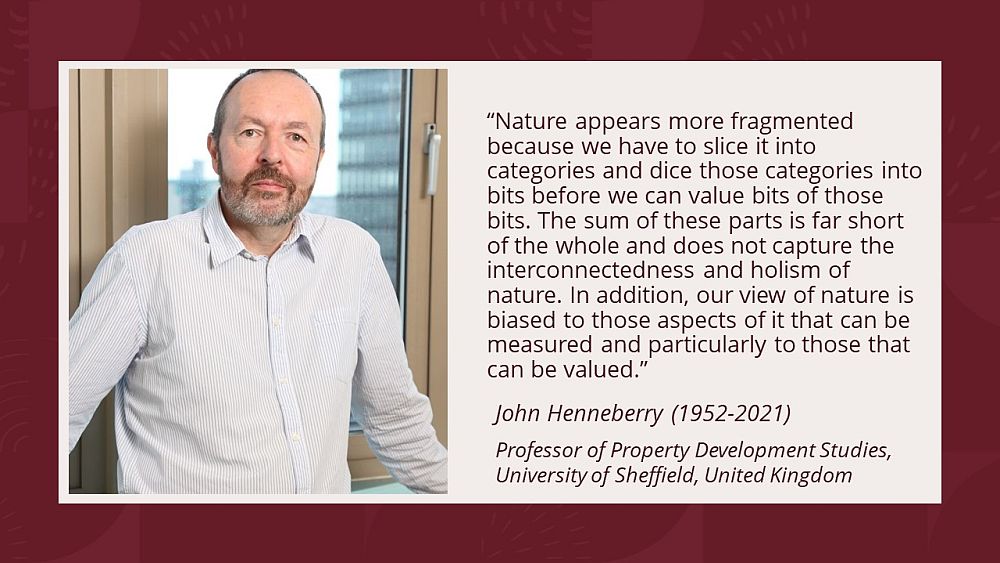TO REVIVE A RIVER, RESTORE ITS LIVER: “A stream is a system. It includes not just the water coursing between the banks but the earth, life and water around and under it,” wrote Erica Gies (Scientific American, April 2022)
Note to Reader:
Salmon are so elemental to Indigenous peoples who live along North America’s northwestern coast that for generations several nations have called themselves the “Salmon People.” But when settlers came, their forms of agricultural and urban development devastated the mighty fish. The cumulative impact of these injuries led to flash floods, unstable banks, heavy pollution and waning life. The hallowed salmon all but disappeared.
To Revive a River, Restore Its Liver
“In 2004 biologist Katherine Lynch was sitting through yet another meeting on how to solve these problems—this one held by her employer, Seattle Public Utilities—when she had an epiphany. Maybe restoration projects were failing because they were overlooking a little-known feature damaged by urbanization: the stream’s ‘gut’,” wrote Erica Gies, author of Water Always Wins: Thriving in an Age of Drought and Deluge (University of Chicago Press, 2022), in an article for Scientific American.
All too often, it is forgotten that a stream is a system. It includes not just the water coursing between the banks but the earth, life and water around and under it. This is the key takeaway message. The article focus is on a layer of wet sediment, small stones and tiny creatures just below the streambed called the hyporheic zone.
To Learn More:
To read the complete article by Erica Gies as published in Scientific American magazine, download a PDF copy of To Revive a River, Restore Its Liver.
“With all the talk about integrating natural assets into asset management, the players forget that nature is a system. They focus too much on specific aspects of the system, rather than its interrelated functions,” stated Tim Pringle
In Beyond the Guidebook 2015: Moving Towards Sustainable Watershed Systems, through Asset Management, the Partnership for Water Sustainability in British Columbia introduced EAP, the Ecological Accounting Process, as a concept for integration of stream systems within an Asset Management Plan. The edition of Waterbucket eNews published on October 19, 2021 provided an update on what has been accomplished through the EAP program. The importance and relevance of EAP is that it provides local governments with a methodology and metrics for integration of natural assets into local government asset management programs.
Download a PDF copy of Living Water Smart in British Columbia: EAP, the Ecological Accounting Process is Game-Changing!

Financial Case for the Stream
John Henneberry (1952-2021) was a source of inspiration for Tim Pringle during the early years of the EAP program. His pioneering work in the United Kingdom provided validation of the wisdom inherent in the whole-system philosophy that guides the EAP program.
John Henneberry’s interests lay at the interface between planning and property, and focused on the use of economic instruments in planning and the reproduction of the urban built environment. He wrote and researched widely on these topics. He is remembered by his colleagues and contemporaries as a gifted scholar, teacher and university leader.
“Over the last decade, an industry has developed that values different aspects of nature in different ways,” wrote John Henneberry in 2018. “Nature appears more fragmented because we have to slice it into categories and dice those categories into bits before we can value bits of those bits. The sum of these parts is far short of the whole and does not capture the interconnectedness and holism of nature. In addition, our view of nature is biased to those aspects of it that can be measured and particularly to those that can be valued.”

Use and Conservation of Land Are Equal Values
“Use and conservation of land are equal values – this is the starting point for EAP. Therefore, one should not be subrogated to the other. But that is traditionally what we have done. Use of land has been the dominant consideration. Until very recently, ecological services have not even been part of the asset management mind-set. At best, ecological services have been considered as an add-on,” stated Tim Pringle, EAP Chair.
“The EAP program has been a multi-year journey to evolve the EAP methodology. Each EAP case study is unique in that partner communities framed creekshed-specific questions to be addressed by their EAP application. Each has yielded key lessons and resulted in fresh observations and insights. We describe these as ‘big ideas’. Each case study has supported the depth of analysis for subsequent EAP applications.”
“The EAP process is collaborative. We modify our theoretical and intellectual approach through conversations with the players. Our goal is to express EAP in language that works for them. That is why Riparian Deficit resonates. We still have work to do with EAP in terms of getting our ideas into language that is easy for a wide audience to use. But we are getting close.”
To Learn More:
Take the time to read, absorb and reflect on A Busy Reader’s Guide below.

Ecological Services are Core Local Government Services
“Ecological services are not intuitively understood by the public, elected representatives, and asset managers. To stimulate awareness and advance uptake of a ‘whole-system approach’ to asset management, it helps to define ecological services in terms of drainage, recreation, habitat, and enjoyment of property uses. This is plain language that everyone understands.”
“Once communities make the mental transition to view ecological services as core local government services, and then look at their budgets differently, the change in mind-set should lead to this question: how can we do things better?”
To Learn More:
To read the complete story published on October 19, download a PDF copy of Living Water Smart in British Columbia: EAP, the Ecological Accounting Process is Game-Changing!



